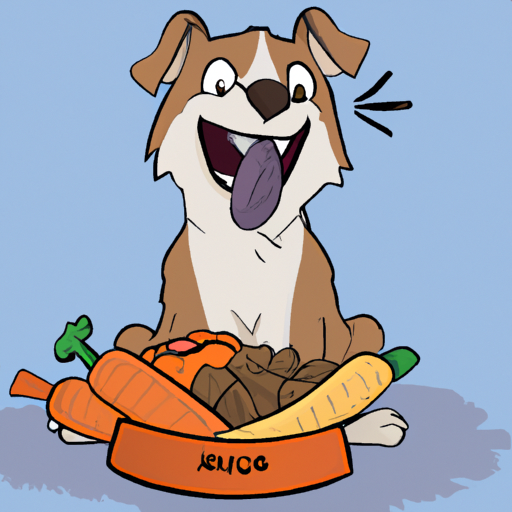A healthy diet is paramount to your dog’s overall well-being, and fiber is a crucial component of that diet. As a caregiver, understanding the significance of fiber in your dog’s diet can help you make better decisions when it comes to their nutrition.
1. The Importance of Fiber
Fiber is an often overlooked, but incredibly important part of your dog’s diet. It aids in digestion, supports weight management, and can even help some dogs with certain health issues. If your dog is not getting enough fiber, they can suffer from issues like constipation or diarrhea.
Fiber comes in two types:
- Soluble Fiber: This type of fiber dissolves in water and can be metabolized by your dog’s body. It helps to slow digestion, keeping your dog feeling full for longer.
- Insoluble Fiber: This type of fiber does not dissolve in water and passes through your dog’s system largely untouched. It adds bulk to your dog’s stool, which helps to keep their bowels regular.
2. Identifying High Fiber Foods
There are many foods that are high in fiber that you can incorporate into your dog’s diet. Here are some of the best options:
- Pumpkin
- Sweet potatoes
- Peas
- Beans
- Broccoli
- Berries
| Food | Type of Fiber | Benefits |
|---|---|---|
| Pumpkin | Soluble and Insoluble | Helps with digestion, weight control |
| Sweet Potatoes | Mostly Soluble | Good for weight control, digestion |
| Peas | Mostly Soluble | Good source of protein and fiber |
| Beans | Soluble and Insoluble | Excellent for weight control, digestion |
| Broccoli | Mostly Soluble | High in antioxidants, fiber |
| Berries | Soluble and Insoluble | Great for digestion, weight control |
3. Incorporating Fiber into Your Dog’s Diet
Introducing fiber into your dog’s diet should be a gradual process. Start by adding small amounts of high fiber foods into their meals. Slowly increase the amount over a few weeks until it makes up a substantial part of their diet.
4. Potential Risks of Too Much Fiber
While fiber is essential for your dog’s health, too much can lead to problems. Overfeeding fiber can result in gas, bloating, and diarrhea. Always consult with your vet before making significant changes to your dog’s diet.
5. Consulting With a Vet
Your vet is your best resource when it comes to your dog’s nutrition. They can provide personalized advice based on your dog’s breed, age, weight, and overall health.
Frequently Asked Questions
Q: How much fiber should my dog eat each day?
A: The amount of fiber your dog needs can depend on their size, age, and activity level. Consult with your vet to get a personalized recommendation.
Q: Can my dog eat too much fiber?
A: Yes, too much fiber can lead to digestive issues like gas and diarrhea. Be sure to introduce fiber slowly and monitor your dog for any adverse reactions.
Q: What are some high fiber dog food brands?
A: There are many high fiber dog food brands available, including Blue Buffalo, Nutro, and Natural Balance. Always check the label to ensure the food is high in fiber.
Q: Can I give my dog a fiber supplement?
A: Yes, fiber supplements are available for dogs. However, it’s best to consult with your vet before starting any new supplement regimen.



